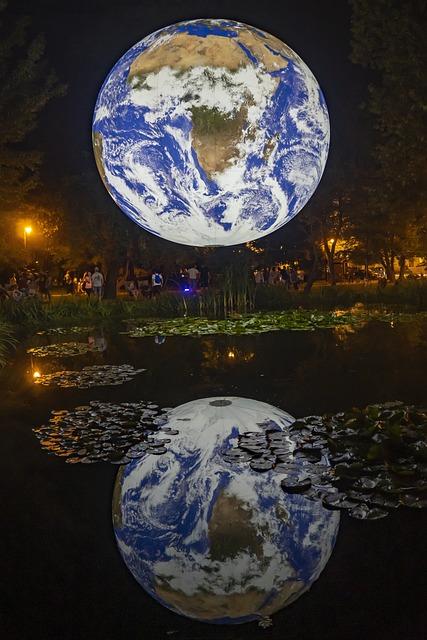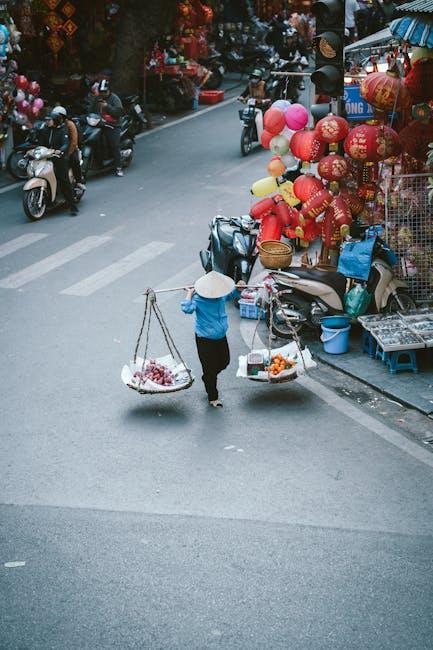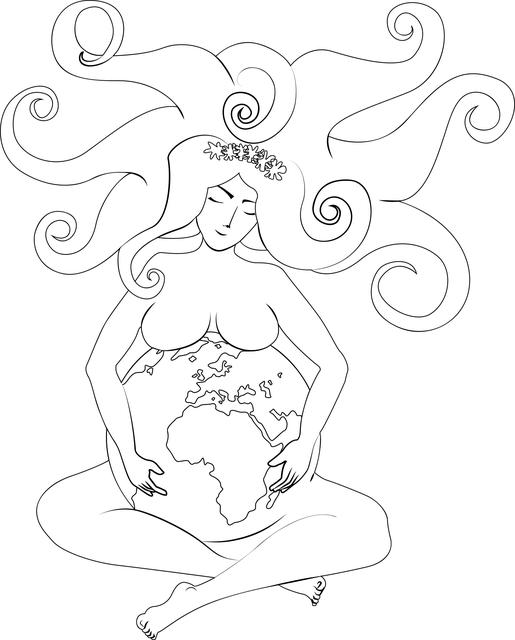Table of Contents
- Exploring the Vision Behind Gaia Kamikatsu
- Sustainable Practices Transforming a Rural Community
- The Role of Local Partnerships in Promoting Eco-conscious Living
- Innovative Waste Management Strategies in Action
- Experiencing Gaia Kamikatsu: A Visitors Guide to Eco-tourism
- Q&A
- To Conclude

Exploring the Vision Behind Gaia Kamikatsu
At the heart of Gaia Kamikatsu lies a profound commitment to sustainability and community building. The vision is not merely about waste management; rather, it embodies a holistic approach to eco-living. This initiative seeks to create a planet-friendly environment in Kamikatsu, a small town in Japan, renowned for its innovative waste separation practices. By fostering a culture of reusability and resourcefulness, Gaia Kamikatsu aims to set an inspiring example for other communities worldwide.
Essential to this vision is the concept of zero waste, which embodies the audacious goal of redefining how society interacts with materials. The residents of Kamikatsu engage in a comprehensive sorting process that categorizes waste into 45 different types. This meticulous approach not only minimizes landfill contributions but also emphasizes the importance of recycling and composting. The community actively participates in workshops and educational programs to raise awareness and encourage mindful consumption.
Furthermore, Gaia Kamikatsu encourages collaboration between local businesses and residents to cultivate a robust circular economy. By leveraging local resources and fostering partnerships, the initiative takes steps to enhance sustainability across various sectors. Below is a brief overview of key components driving this vision:
| Component | Description |
|---|---|
| Waste Segregation | 45 categories for waste sorting to optimize recycling efforts. |
| Community Engagement | Workshops to educate residents on sustainable practices. |
| Circular Economy | Partnerships with businesses to promote resource reuse. |
Sustainable Practices Transforming a Rural Community
In the tranquil town of Kamikatsu, innovative sustainable practices have redefined community life, fostering a sense of responsibility towards the environment. The local government and residents have come together to implement a zero-waste initiative that prioritizes recycling, composting, and eco-friendly disposal methods. This transformation not only reduces waste but also encourages community involvement and education about resource management. Residents actively participate in weekly workshops, focusing on how to segregate waste effectively, with a passionate drive towards minimizing their ecological footprint.
One of the most remarkable aspects of Kamikatsu’s sustainability movement is its emphasis on organic farming. By embracing traditional agricultural methods, local farmers cultivate a variety of crops without the use of harmful chemicals. This not only preserves the local ecosystem but also enhances food security within the community. Initiatives such as the following contribute to this agricultural renaissance:
- Crop rotation: Enhances soil fertility and reduces pest problems.
- Permaculture practices: Create a self-sustaining agricultural environment.
- Community-supported agriculture (CSA): Strengthens ties between farmers and consumers.
Furthermore, the revival of heritage crafts promotes sustainability within the local economy. Artisans and craftspeople harness traditional techniques to create beautiful products with minimal environmental impact. By prioritizing local materials and labor, these practices support economic self-sufficiency and reduce transportation emissions. The economic benefits are highlighted in the following table:
| Craft | Materials Used | Environmental Impact |
|---|---|---|
| Textiles | Local cotton and dyes | Minimal carbon footprint |
| Pottery | Natural clay | Reduces plastic usage |
| Furniture | Sustainable wood | Supports forest conservation |
By fostering these sustainable practices, Kamikatsu not only transforms the environmental landscape but also strengthens community bonds and cultivates a shared commitment to a sustainable future. This harmonious blend of innovation and tradition serves as an inspiring model for rural communities worldwide.

The Role of Local Partnerships in Promoting Eco-conscious Living
Local partnerships play a crucial role in fostering eco-conscious living within communities, serving as a foundation for sustainable practices and shared resources. By bringing together small businesses, non-profits, and residents, these collaborations create a network of support that emphasizes green initiatives. For instance, local farmers can team up with restaurants to promote farm-to-table dining, significantly reducing carbon footprints associated with food transportation. This synergy facilitates education on sustainable agriculture, helping consumers make more informed choices.
Moreover, the pooling of resources through local alliances leads to innovative waste-reduction programs. Areas focusing on community gardens not only provide fresh produce but also serve as spaces for workshops teaching composting and recycling. Partnerships with educational institutions can further amplify these efforts, engaging students and families alike in environmental stewardship. Additionally, local artisans and craftspeople can offer alternatives to mass-produced goods, showcasing the benefits of upcycled and sustainably sourced materials.
The impact of these collaborations extends beyond individual contributions; they collectively strengthen community resilience against environmental challenges. Local partnerships often initiate programs such as clean-up drives, tree-planting events, and sustainability fairs that encourage participation and awareness among residents. By cultivating a culture of eco-consciousness, these initiatives inspire individuals to adopt greener lifestyle choices, reinforcing the notion that sustainable living is both achievable and beneficial for the entire community.

Innovative Waste Management Strategies in Action
In the quaint town of Kamikatsu, Japan, innovative waste management strategies are reshaping community involvement and environmental stewardship. The town has adopted a zero-waste goal, aiming to divert over 80% of waste from landfills. This ambitious initiative has led to the establishment of a sophisticated sorting system, where residents are encouraged to separate their waste into 45 distinct categories. This meticulous approach not only minimizes landfill usage but also enhances recycling processes, promoting a circular economy. The commitment of Kamikatsu’s residents is a model for communities worldwide, demonstrating that collective action can yield significant environmental benefits.
At the heart of Kamikatsu’s waste management program is the community’s active participation and educational outreach. The town implements various workshops and campaigns that emphasize the importance of reduce, reuse, and recycle. This grassroots method includes:
- Public seminars on sustainable practices
- Collaborative art projects using recycled materials
- Involvement of local schools in waste management education
The results of these initiatives are not just seen in reduced waste but also in the creation of a community identity centered around sustainability. Kamikatsu is now gaining recognition as a pioneer in waste management, and other regions are taking notes. A recent survey illustrated the effectiveness of their strategies, showcasing an impressive decline in waste sent to landfills:
| Year | Landfill Waste (tons) | Recyclables (tons) |
|---|---|---|
| 2016 | 1,500 | 800 |
| 2019 | 1,000 | 1,200 |
| 2022 | 500 | 1,800 |
As stakeholders from various sectors observe and analyze Kamikatsu’s methodology, the framework established here serves as a blueprint for sustainable living. By fostering a culture that values sustainability and empowering citizens to take an active role, Kamikatsu not only addresses its waste dilemma but also sparks a broader conversation about environmental responsibility and innovation at the grassroots level. Such actions invite a ripple effect, inspiring further initiatives both locally and globally.

Experiencing Gaia Kamikatsu: A Visitors Guide to Eco-tourism
Explore the lush landscapes and innovative eco-friendly practices that make Kamikatsu a model destination for sustainable tourism. The town prides itself on its commitment to environmental consciousness, illustrated through its zero-waste philosophy. Visitors can immerse themselves in the experience by staying at eco-lodges that emphasize harmony with nature. Here are some key highlights to consider:
- Sustainable Accommodations: Opt for lodgings that utilize energy-efficient methods, renewable resources, and local materials.
- Nature Trails: Discover stunning hiking paths that wind through forests, rivers, and mountains, offering guided tours to learn about local flora and fauna.
- Community Workshops: Engage with local artisans in workshops on traditional crafts, organic farming, or waste management.
Food enthusiasts will adore Kamikatsu’s culinary scene, which emphasizes farm-to-table freshness. Many restaurants prioritize ingredients sourced from local farmers, and some even involve farm visits that allow visitors to pick their own produce. Whether you’re sampling seasonal vegetables or indulging in locally-caught fish, dining here becomes an integral part of the eco-tourism experience. Key dining options include:
| Restaurant | Cuisine Type | Specialty |
|---|---|---|
| Green Leaf Café | Vegetarian | Organic salads & smoothies |
| Seaside Grill | Seafood | Daily fresh catch |
| Kamikatsu Tea House | Japanese | Matcha tea & local sweets |
As an eco-tourism destination, Kamikatsu also encourages visitors to participate in local conservation efforts. Understanding the delicate balance of the ecosystem is crucial; hence, volunteer opportunities are often available. Whether participating in beach clean-ups, forest restoration projects, or helping with recycling initiatives, these activities foster a deeper appreciation of nature and the importance of sustainable living. Don’t miss out on the chance to contribute to Kamikatsu’s ongoing journey toward environmental stewardship.
Q&A
Q&A: Exploring Gaia Kamikatsu
Q1: What is Gaia Kamikatsu?
A1: Gaia Kamikatsu is a pioneering initiative rooted in experimental sustainability, located in the scenic town of Kamikatsu in Japan. This project focuses on creating a self-sustaining community that embodies the principles of zero waste and environmental stewardship. By combining traditional Japanese practices with innovative eco-friendly systems, Gaia Kamikatsu aims to inspire individuals and communities globally to adopt sustainable lifestyles.Q2: Why was Gaia Kamikatsu created?
A2: The initiative was born out of a necessity to address the growing waste problem in Japan, particularly in rural areas. The founders of Gaia Kamikatsu recognized Kamikatsu’s unique challenges and saw an opportunity to transform the town into a model for sustainable living. By educating residents and visitors about the importance of waste reduction, recycling, and environmental care, Gaia Kamikatsu aspires to showcase that a zero-waste lifestyle is achievable and beneficial for all.Q3: What initiatives does Gaia Kamikatsu implement?
A3: Gaia Kamikatsu employs a multifaceted approach that includes various initiatives like a robust waste separation program, composting systems, and community workshops. One of their standout projects is the local recycling facility, which processes and repurposes materials that would otherwise be discarded. Additionally, they offer educational programs covering topics such as organic farming, sustainable energy, and eco-design, empowering the community to embrace and uphold sustainable practices.Q4: How can visitors engage with Gaia Kamikatsu?
A4: Visitors to Kamikatsu can immerse themselves in the Gaia Kamikatsu experience through guided tours, hands-on workshops, and volunteer opportunities. These interactive experiences allow guests to learn about the town’s zero-waste efforts firsthand, engage with locals, and even participate in eco-friendly activities like gardening and crafting with recycled materials. This engagement not only enriches the visitor’s experience but also fosters a sense of community and shared purpose.Q5: What impact has Gaia Kamikatsu had on the local community?
A5: The impact of Gaia Kamikatsu on the local community has been profound. It has not only reduced the amount of waste produced in the area but has also transformed the mindset of residents towards sustainability. The initiative has fostered a sense of pride in communal efforts to preserve the environment, leading to increased participation in eco-friendly practices. Additionally, it has attracted attention from sustainability enthusiasts and researchers from around the world, putting Kamikatsu on the map as a leader in environmental innovation.Q6: What can other communities learn from Gaia Kamikatsu?
A6: Other communities can learn the importance of collaboration, education, and local empowerment from the Gaia Kamikatsu model. By actively involving residents in the creation of sustainable practices and solutions that cater to specific local challenges, communities can foster ownership and commitment toward environmental initiatives. Furthermore, the importance of ongoing education cannot be overstated—it encourages continuous engagement and inspires innovative ideas that can lead to real change.Q7: How does Gaia Kamikatsu fit into the global sustainability movement?
A7: Gaia Kamikatsu is a vital part of the global sustainability movement by serving as a blueprint for how small communities can lead by example in the quest for environmental responsibility. Its practices resonate within the broader context of climate action efforts, zigzagging across issues of waste management, resource conservation, and community resilience. The project highlights that substantial change starts at the grassroots level, encouraging other communities to adopt similar frameworks in their pursuit of sustainability.This Q&A provides an engaging overview of Gaia Kamikatsu, articulating its vision and impact while addressing common inquiries to further the reader’s understanding of this remarkable initiative.



0 Comments